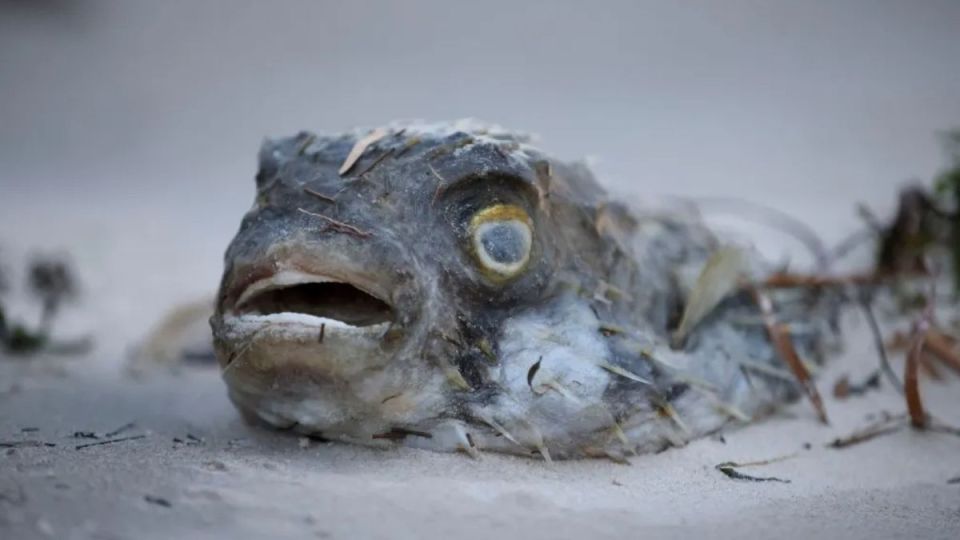


A toxic algal bloom has wreaked havoc on South Australia’s marine life since March, but the devastation runs deeper than many might think.
“For traditional owners of the South Australian coastline, our connection to the marine environment is both cultural and spiritual,” Brad Darkson, Narungga, director of Moonrise Seaweed Co and Flinders University PhD candidate, said.
“When we witness major die-off events due to external stressors, our elders and community feel both distress and outrage that this has been allowed to occur.”
Coastal communities have also been hit hard by the disaster, the scale of which has never been seen before.
Tom, a resident of SA’s south coast and a surfer, is just one South Australian who has experienced the effects of the algal bloom first-hand.
“I was tight chested and from there I had really sore, irritated, red eyes – it felt like a sinus and throat infection, but it came on really fast,” he said.
Tom had been surfing in May at Waitpinga Beach, on the Fleurieu Peninsula. While he recovered quickly from his symptoms, he said those in the beachside communities were deeply concerned about what they’ve witnessed.
“It is a worry, especially when we’re looking at such fragile ecosystems like leafy seadragons and such, species that are already in trouble,” he said.
“It’s not good.”
As the algal bloom continues, there have been calls for a royal commission into the catastrophe, as well as for it to be declared a national disaster.
Flinders University’s Dr Georgina Wood, ARC Early Career Research Industry Fellow, said it was critical it was recognised as a crucial event, adding that significant national and state investment was needed.
“This is one of the most significant marine mortality events on the great southern reef in living memory,” said Wood, who also holds a position at the University of Western Australia.
“The algal bloom has had a devastating impact on local marine life, and it will take a long time for both ecosystems and industry to recover.”
Fortunately, South Australia’s leading experts in this field are combining their knowledge and resources to better understand the deadly algal bloom, working together to uncover the causes behind it and develop strategies to prevent it or stop a future outbreak.
When algae turns deadly: Science behind the devastation
Algal blooms are a natural phenomenon that involve the rapid increase of algae populations – many of which aren’t harmful.
Darkson, who is developing accessible methods for cultivating seaweed to remediate coastal waterways, based on First Nations knowledge systems, said algae contributed a significant portion of the oxygen in our atmosphere and marine animals depended on productive algal blooms to form the basis of their food chains.
In this case, the bloom – containing Karenia mikimotoi, among other potentially harmful algae species – was caused by warmer-than-normal sea temperatures and high-pressure systems leading to still conditions where algae could flourish. The longer it has hung around, the more damage it has done.
High nutrient levels from recent extreme events might have also contributed to this perfect storm, with conditions aligned for strong algal blooms.
Wood said the agal bloom was likely to reoccur given the increasing frequency of some of the likely contributors such as hot, calm waters and increased nutrients.
How can we – if at all – prevent it from happening again, or at least lessen the impact?
Answers we need to prepare for the future
Professor Charlie Huveneers, director of Flinders University Marine and Coastal Research Consortium, who also leads the Southern Shark Ecology Group, and his team have collected dead sharks and rays to better understand how the algal bloom affects marine organisms and why some species seem more affected than others.
The team, supported by Green Adelaide and IMOS, also has an extensive array of acoustic receivers along Adelaide’s metropolitan beaches, tagging marine life such as southern fiddler rays and Port Jackson sharks.
“Thanks to this existing dataset, we will be able to compare the movement, residency and survival of these species during the algal bloom to previous years under normal conditions,” Huveneers said.
“This will provide us with a better understanding of the impacts of the algal bloom.”
Professor Elizabeth Dinsdale and her team have looked at microalgae and the marine bacteria and viruses present during this algal bloom. Normally, microbes and viruses in the marine environment provide benefits, such as nutrients and oxygen that we breathe.
“We now have the dataset to describe how many bacteria and viruses are associated with the microalgae,” said Dinsdale, who works with the Flinders Accelerator for Microbiome Exploration.
“What we’ve been seeing is that, where the microalgae are growing rapidly, the abundance of microbes is also increasing.
“The high growth of bacteria uses oxygen, causing conditions where there is a complete absence of oxygen in the water, which affects the health of organisms such as sharks, rays and fish.”
Dinsdale said worked continued on finding a bacteria or virus that may infect the micro-algae and control its growth.
Darkson said the spiritual and mental health impacts for community should not be overlooked as researchers came up with strategies for repeat events.
“We need to start implementing both local and global solutions to mitigate against these events recurring,” he said.
Wood has worked in collaboration with the Great Southern Reef Foundation and Dinsdale to survey reef life in affected areas. The team has collected water samples to learn how microbes in the water impact marine life once this toxic algal bloom subsides.
“This is a dire reminder of how vulnerable our marine ecosystems are and how we need significant investment to better understand our reefs and broader underwater ecosystems,” Wood said.
“The Great Southern Reef Research Partnership has called on the government for $40 million dollars over 10 years for a national Great Southern Reef monitoring program – it’s critical to gather information on the state of our marine biodiversity now as we face further impacts in the face of rapid environmental change.”
This article first appeared in InDaily. Read the original here










